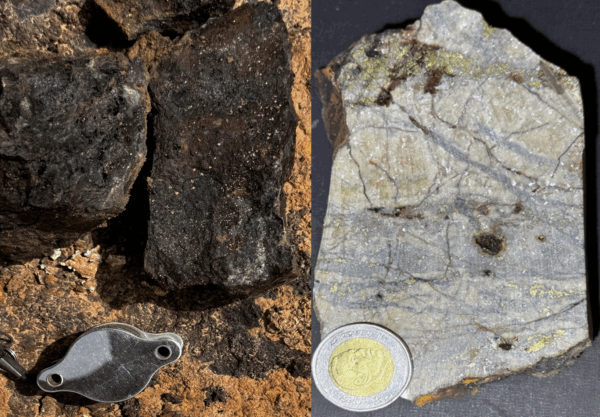Note to editors: A media kit, including the broadcast of the full press event, patient biographies, b-roll footage, and still images, is available here (video footage to be enclosed at Noon).
MONTREAL, Feb. 18, 2025 (GLOBE NEWSWIRE) — This year marks a historic milestone for Shriners Hospitals for Children Canada as it proudly celebrates 100 years of transforming children’s lives through specialized pediatric care, groundbreaking research, and a commitment to innovation.
Today, the hospital celebrates its legacy by uniting patient ambassadors and current patients to share their remarkable stories during a special day of activities showcasing the hospital’s profound impact on pediatric orthopaedic care, research, and education—locally, nationally, and internationally. To underscore the hospital’s commitment to helping children without regional boundaries, activities are being broadcast across 18 locations to recognize out-of-province patients and donors.
“To think that what began a century ago here in Montreal has grown into a world-class orthopaedic pediatric healthcare institution is truly inspiring,” says Gary McKeown, Chair of the Board of Governors for Shriners Hospitals for Children Canada. “This milestone is a testament to the unwavering dedication of our medical teams, researchers, and staff who provide exceptional care to children. It is also a reflection of the generosity and commitment of Shriners across Canada and the Northeastern United States, whose support for our hospital has made our work possible for 100 years. Their tireless efforts ensure that we continue to innovate, heal, and give hope to our patients and their families.”
“For 100 years, Shriners Hospitals for Children Canada has been more than just a hospital—it has been a place of healing, discovery and hope. As we celebrate this milestone, we honour our employees, patients, families, physicians, and donors who have shaped our incredible legacy and continue to inspire our future,” says Jacques Boissonneault, Director General at Shriners Hospitals for Children Canada. “Our commitment to advancing pediatric orthopaedic care, research, and education remains unwavering, and we are ready to embark on the next century of innovation and person-centred care.”
At today’s press event to celebrate this milestone, the hospital honours its legacy through inspiring patient ambassadors like Jani Barré, author, athlete and Guinness World Record holder for fastest marathon in a non-racing wheelchair. Born with osteogenesis imperfecta (OI), a rare bone disease that has resulted in 157 fractures throughout her life, Barré was treated at the hospital in the 1990s. Today, her goal is to inspire others to embrace their potential and believe in limitless possibilities, as she has done in her autobiography, 157 Fractures, A True Story.
“I spent half of my childhood at the Shriners Hospital. They saved my life. They’ve always been my second family,” Barré says.
Luca “Lazy Legz” Patuelli, an Arthrogryposis patient ambassador, worldwide performer and dancer, adds:
“What I love about Shriners is the incredible warmth and hospitality from both the staff and volunteers. Once you’re in the hospital, the team creates an environment that makes you forget you’re even in a hospital—it’s that feeling of comfort and care that truly aids in the healing process.”
Celebrating 100 years of Hope, Healing and Innovation
At the turn of the 20th century, the polio epidemic was sweeping North America, especially affecting children. The Shriners fraternity decided to do something remarkable. In 1920, at their national conference, they decided to create a hospital system available to any child regardless of ability to pay.
Founded in 1925, in Montreal, Quebec, Shriners Hospitals for Children Canada became the eighth Shriners institution to offer pediatric specialty care for children with complex conditions. Harvey Jones from Haileybury, Ontario was admitted in February 1925 at 10 years old by Louise A. Dickinson, Hospital Administrator, and was treated by Florence Potts, Head Nurse, and Dr. Alexander Mackenzie-Forbes, Chief of Staff.
From 1925 to 1950, the hospital grew its services to offer care for patients with tuberculosis, polio, arthritis, club foot, as well as provide treatments requiring specialized spine surgeries. One of the hospital’s first internationally recognized innovations was made by Doctor J. Gordon Petrie, Chief of Staff, from 1946 to 1968. The Petrie Cast he perfected is still used today for the treatment of Perthes disease, a rare childhood condition that affects the hip.
In 1949, a second Canadian hospital opened in Winnipeg, Manitoba providing orthopaedic pediatric care in time for the polio epidemic. The facility remained open until 1977.
In 1972, public health care was born in Canada. The hospital became a part of the Quebec healthcare system thanks to the leadership of Dr. Richard Cruess and Judge Marshall Porter. This status launched a new era for the hospital, including developing its research activities.
In 1973, the hospital inaugurated its Research Department (then named Genetics Unit) under the leadership of Dr. Francis Glorieux, becoming the first Shriners facility with a dedicated research centre. This groundbreaking team paved the foundation for many life-changing advancements in pediatric orthopedic care.
Over the years, the hospital became renowned for its research into metabolic bone diseases, making discoveries that shaped modern treatments:
- 1980: Dr. Francis Glorieux published research on a treatment for X-linked hypophosphatemic (XLH) rickets, a genetic disorder that weakens bones. This work provided hope and better outcomes for children with the condition.
- 1981: Dr. Francis Glorieux discovered and published a treatment for vitamin D-related bone disorders, further improving care for children with bone health challenges.
- 1998: Dr. Francis Glorieux introduced the use of bisphosphonates to treat OI, a condition that causes brittle bones. This became the gold standard for managing OI and significantly improved patients’ quality of life.
- 2000: Dr. François Fassier and Dr. Pierre Duval developed the Fassier-Duval Telescopic Rod, a revolutionary surgical treatment for OI. This innovation, which grows with the child’s bones, reduced fractures and the need for repeated surgeries, establishing the global standard of care for managing OI.
- 2013: Addition of nursing research focused on improving the lives of the children we treat, helping them build better coping mechanisms, preparing them for adult care, and striving to find new and better ways to manage pain.
The years to follow represented a period of hospital expansion as it offered care to more children with specialized orthopedic conditions such as scoliosis and cerebral palsy, causing the hospital to outgrow its original facility.
In 2015, the hospital moved from the legacy site on Mont Royal to where it currently sits beside the McGill University Health Centre (MUHC) on the Glen Campus. The new site houses expanded teaching facilities, including a simulation centre for medical residents and practitioners to receive surgical training, as well as updates on healthcare best practices.
Today, its wrap around services compare to no other facility in Canada: specialized care, including a comprehensive rehabilitation facility, motion analysis center, specialized doctors and surgeons, world recognized leading research in complex orthopedic conditions, nursing, pain management and more.
It is also a place where children and families find hope. With a legacy of pioneering medical breakthroughs Shriners Hospitals for Children Canada continues to shape the future of pediatric orthopaedic care.
About Shriners Hospitals for Children Canada
Established in Montreal in 1925, Shriners Hospitals for Children Canada is a bilingual, short-term, acute care hospital, providing ultra-specialized orthopaedic care to children from across Canada and around the world. The mission of the hospital is to provide treatment and rehabilitation to infants, children and young adults with orthopaedic and neuromuscular problems such as scoliosis, osteogenesis imperfecta (brittle bone disease), clubfeet, hip dysplasia, leg length discrepancies and cerebral palsy, among others. The hospital is committed to excellence and innovation in clinical practice, research and education. Affiliated with McGill University, the hospital provides clinical experience and teaching for residents and allied professionals within its outstanding new facility on the Glen site. The hospital is present in communities across Canada, thanks to telemedicine, outreach clinics and satellite clinics.
Media Contact
Timothy Fisher
Director of Marketing and Communications
[email protected]




